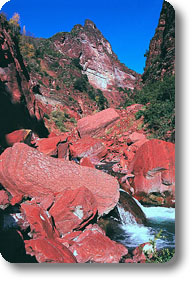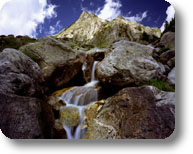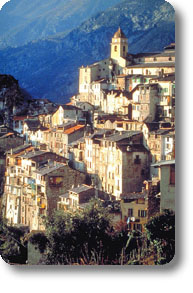
 |
Mercantour National Park |
Points of Interest |
|
|
|
| Shaped by different influences, Mercantour boasts an important historical heritage. Crossroads of economic and cultural exchanges between Provence, Nice County, and Italy, Mercantour and its Municipalities preserve architectural and artistic treasures dating back to Roman, medieval, and Baroque times. The 15th and 16th century frescoed chapels deserve a particular mention. Besides the acknowledged sites and monuments, there are several buildings belonging to the minor and less known national architectural heritage (rural buildings, mills, kilns, calvaries, fountains, etc.) and contributing to shape the identity of Argentera-Mercantour massif. |
|
Valleys and Locations |
|
  |
Haut Var-Cians ValleyCians and Daluis gorges represent a unique natural setting in Europe. (links to French texts) |
Tinée Valley |
|
Tinée is a valley with a double face: deeply Mediterranean in the south and entirely "alpine boreal" in the north. It is a confined valley, whose river crosses steep walls organized in terraces, dominated by forests and summer grazing lands.
(links to French texts) |
|
Vésubie Valley |
|
 |
A raging tributary of Var, Vésubie runs in a valley closed by gorges and dug by the glaciers of the Quaternary period. The olive trees of Lantosque almost immediately give way to alpine landscapes. Turini and Saint Martin Vésubie are surrounded by mountain forests. In the deep valleys of Gordolasque, Madone, and Boréon, large larch forests lead to the lakes of glacial origin set in the alpine meadows and surrounded by the walls of the summits where some snow fields resist also during the summer. At less than 40 km from the sea, Vésubie valley offers high-mountain landscapes with summits of over 3,000m, like Mt. Gélas (3,143m). (links to French texts) |
Roya - Bévéra Valley |
|
   |
The Valley of Wonders, a reference site of Roya Valley, scattered with glacial lakes and dominated by Mt. Bégo, is a real pagan sanctuary dating back to the Bronze Age. It preserves on its rocky slabs over 36,000 outdoor prehistoric engravings and represents one of the biggest sites in the world.
(links to French texts) |
Ubaye Valley |
|
| Ubaye valley, the northernmost valley in Mercantour, lies between Dauphiné, Provence, and Italy. The river has dug here large terraces, giving origin to variegated habitats favoring the presence of several vegetable and animal species. The contrast of landscapes is clear between the long basin of Barcelonnette and the suspended valleys leading to the highest summits. The several hills have played an important role as ways of communication and for the military history of France: it is still possible to see ruins of fortresses, today useless watchtowers dominating ridges with no enemies, only populated by the covert shades of the bearded vulture, the ibex, the stoat, and the partridge. (links to French texts) |
|
Haut-Verdon Valley |
|
| Surrounded by the Mediterranean light, Verdon upper valley is a mix of forests, summits, lakes, and pastures. In these dry mountains, whose meadows are used as pastures for the cattle, the relief is rough and the streams run among the black marls, giving origin to large dug slopes. This valley combines traditional farmsteads, ski resorts, and fortified towns like Colmars les Alpes. (links to French texts) |